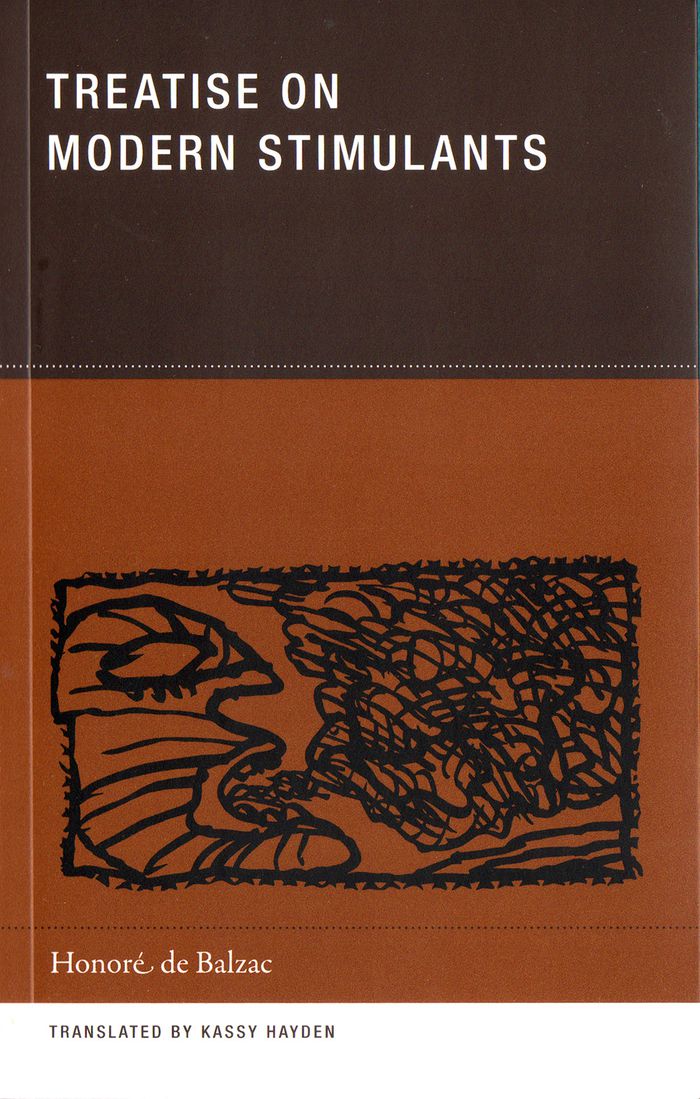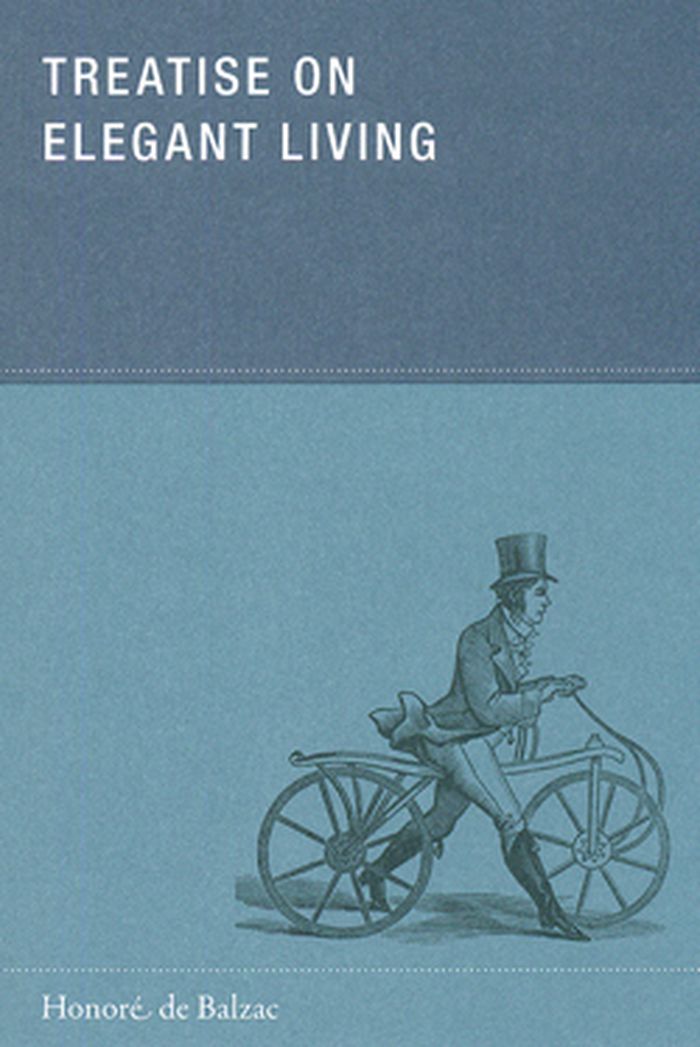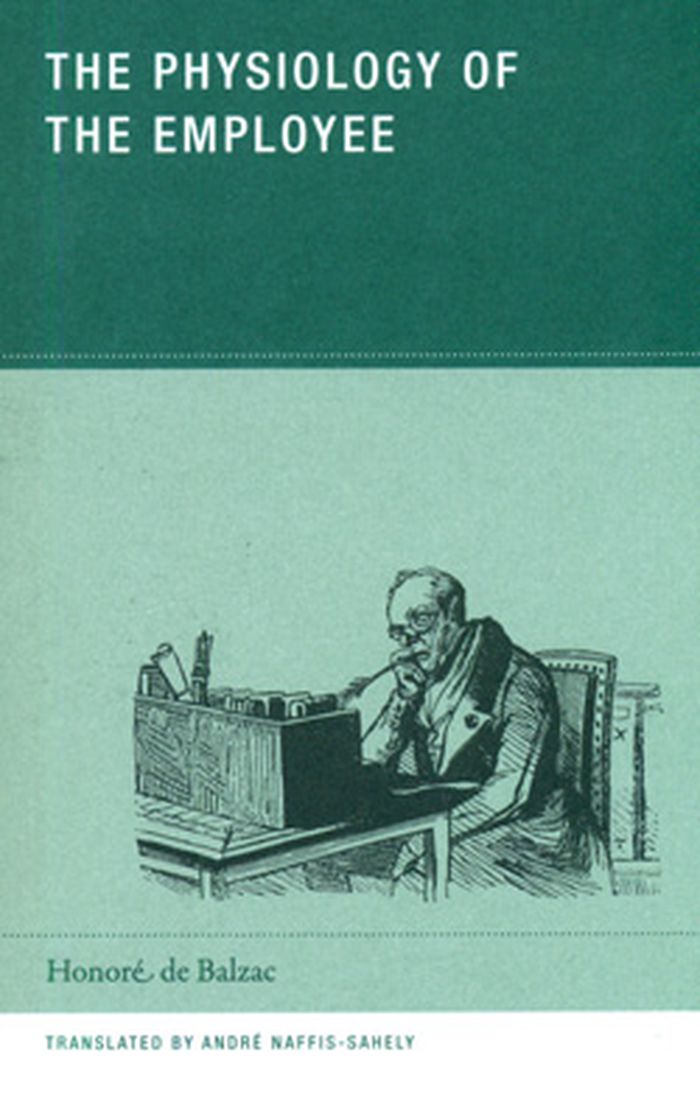$18.50
(disponible sur commande)
Résumé:
Honoré de Balzac's "Treatise on Modern Stimulants" is a meditation on five stimulants—tea, sugar, coffee, alcohol and tobacco—by an author very conscious of the fact that his gargantuan output of work was driven by an excessive intake (his bouts of writing typically required 10 to 15 cups of coffee a day) that would ultimately shorten his life. First published in French(...)
Treatise on modern stimulants
Actions:
Prix:
$18.50
(disponible sur commande)
Résumé:
Honoré de Balzac's "Treatise on Modern Stimulants" is a meditation on five stimulants—tea, sugar, coffee, alcohol and tobacco—by an author very conscious of the fact that his gargantuan output of work was driven by an excessive intake (his bouts of writing typically required 10 to 15 cups of coffee a day) that would ultimately shorten his life. First published in French in 1839 as an appendix to Jean Anthelme Brillat-Savarin's "Physiology of Taste", this Treatise was at once Balzac's effort at addressing what he perceived to be an oversight in that cornerstone of gastronomic literature; a chapter toward his never-completed body of analytic studies (alongside such essays as "Treatise on Elegant Living") that were to form an overarching "pathology of social life"; and a meditation on the impact of pleasure and excess on the body and the role they play in shaping society.
Théorie/ philosophie
Treatise on elegant living
$16.00
(disponible sur commande)
Résumé:
Honoré de Balzac's 1830 Treatise on Elegant Living was a keystone text on dandyism, preceding Jules Barbey d'Aurevilly's Anatomy of Dandyism (1845) and Charles Baudelaire's “The Dandy” (in The Painter of Modern Life, 1863), and marking an important shift from the early dandyism of the British Regency to the intellectual and artistic dandyism of nineteenth-century France.(...)
Treatise on elegant living
Actions:
Prix:
$16.00
(disponible sur commande)
Résumé:
Honoré de Balzac's 1830 Treatise on Elegant Living was a keystone text on dandyism, preceding Jules Barbey d'Aurevilly's Anatomy of Dandyism (1845) and Charles Baudelaire's “The Dandy” (in The Painter of Modern Life, 1863), and marking an important shift from the early dandyism of the British Regency to the intellectual and artistic dandyism of nineteenth-century France. The Treatise is the first true philosophical expression of dandyism, and is full of well-crafted aphorisms: “Elegant living is, in the broad acceptance of the term, the art of animating repose,” runs one classic definition of dandyism, and “One must have studied at least as far as rhetoric to lead an elegant life” asserts the importance of verbal pirouette and dexterous quipping to the dandy. Further embellished with anecdotes and historical and personal illustrations, Balzac's Treatise even features a fictitious encounter with the original dandy himself, Beau Brummell. Never before translated into English, this witty tract makes for an illuminating cornerstone to Balzac's Human Comedy (which was originally to have included a never-completed four-part philosophical “Pathology of Social Life”). Above all, it represents a decisive moment in the history of dandyism, and an entertaining exposition on the profundities of what lies deepest within all of us: our appearance.
petits formats
$19.95
(disponible sur commande)
Résumé:
Long before Franz Kafka described the nightmarish metaphysics of office bureaucracy, Balzac had undertaken his own exploration of the dust-laden, stifling environment of the paper-pusher in all of his roles and guises. "Bureaucracy," as he defined it: "a gigantic power set in motion by dwarfs." In this guidebook, published for mass consumption in 1841, Balzac's classic(...)
The physiology of the employee
Actions:
Prix:
$19.95
(disponible sur commande)
Résumé:
Long before Franz Kafka described the nightmarish metaphysics of office bureaucracy, Balzac had undertaken his own exploration of the dust-laden, stifling environment of the paper-pusher in all of his roles and guises. "Bureaucracy," as he defined it: "a gigantic power set in motion by dwarfs." In this guidebook, published for mass consumption in 1841, Balzac's classic theme of melodramatic ambition plays itself out within the confined, unbreathable space of the proto-cubicle, filtered through the restricted scale of the pocket handbook. Translated by André Naffis-Sahely.


